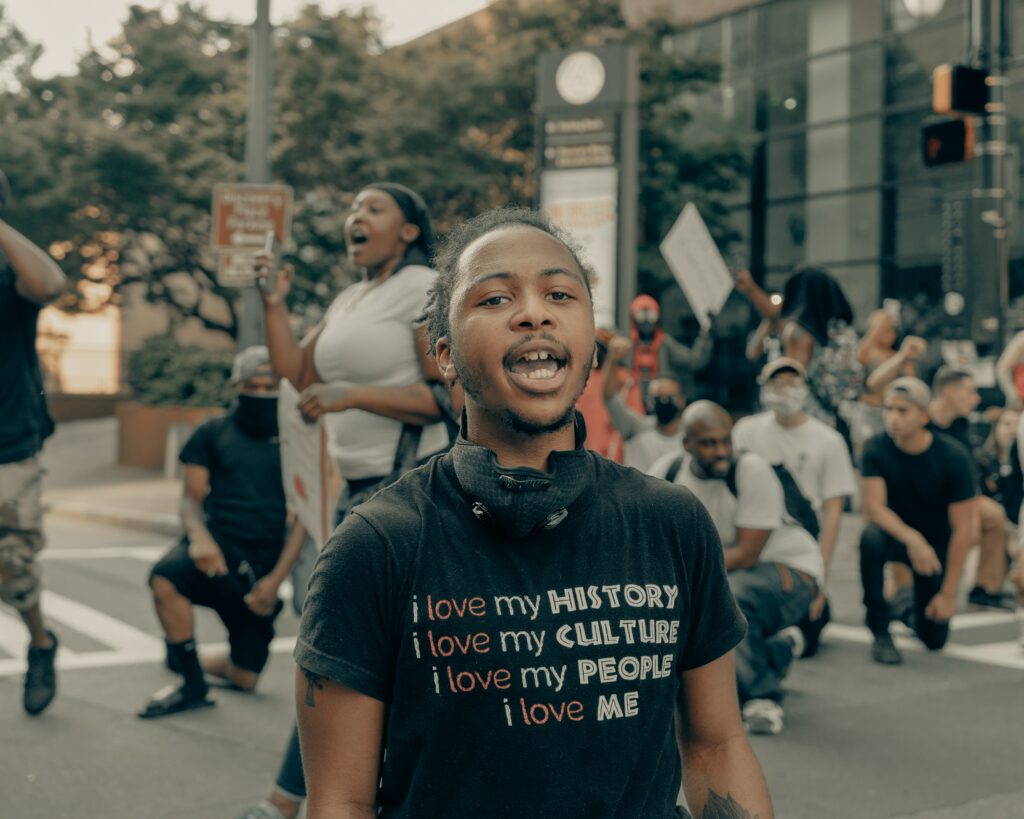In the United States, February is designated as Black History Month. It is a time to remember the experiences and celebrate the contributions of Black people in America. The month-long observance was pioneered by Carter G. Woodson, who instituted Negro History Week in 1926. Educators at Kent State University are credited with first observing a month-long celebration in 1969, and other educational institutions adopted the practice in subsequent years. President Ford recognized Black History Month in 1976, stating the all Americans should “seize the opportunity to honor the too-often neglected accomplishments of Black Americans in every area of endeavor throughout our history.”

For many, acknowledging and celebrating Black History Month is routine. However, we should not forget why the observance exists — some histories and stories are “too-often neglected.” Human beings have a bad habit of separating ourselves into social groups, centering ourselves and our own stories, and overlooking and silencing those we consider the “other.” One way to describe this phenomenon is bias, and bias is not unique to one group of people. We all have biases, to some extent, and act on them without even consciously thinking about it. Black History Month is one example of an attempt to bring focus on stories that are too-often neglected; however, it is neither the only example, nor is it the only one that is needed. There are many stories that need to be heard.
When thinking about the children and youth you serve, is there space for all of their stories to be heard? Are your young people free to culturally express themselves? Does your congregation celebrate diversity by sharing stories that are too-often neglected? In the book of Revelation, the apostle John shares a vision of heaven:
After this I looked, and there before me was a great multitude that no one could count, from every nation, tribe, people and language, standing before the throne and before the Lamb. They were wearing white robes and were holding palm branches in their hands. And they cried out in a loud voice: “Salvation belongs to our God, who sits on the throne, and to the Lamb.” (Revelation 7:9-10)
This image of heaven gives us a clue that ethnicity and culture have some sort of eternal value. Our ethnic and cultural differences reflect God’s beauty and creativity. At the same time, those saints from different backgrounds are united in their worship of God. Diversity in unity is part of God’s design for humanity. Our cultural differences should be celebrated, and our unity in Christ should be celebrated even more.
If you do not have experience cultivating diversity, here are some tips:
- Come to terms with your own bias. We all have biases and comfort zones which have caused us to value some stories more than others. Part of following Christ involves striving to rid ourselves of these biases (Leviticus 19:15; 1 Timothy 5:21; James 3:16-18; 1 John 2:9-11). One helpful resource is Project Implicit, a website that has several implicit bias tests you can take for free. Visit:https:// implicit.harvard.edu/implicit/takeatest.html
- Get educated about those different from you. We all have to work to decenter our own story. A great way to do this is to listen to the stories of others. If you are new to this journey, here are a few books that can help you get started: One Blood by John M. Perkins, Be the Bridge by Latasha Morrison, and The Third Option by Miles McPherson.
- Cultivate cross-cultural relationships. Form intentional relationships with people of different backgrounds. Allow yourself to be shaped by different cultures, and open yourself to new perspectives.
- Talk to your youth. After doing some internal work, ask your young people if they feel free to express who they are culturally. Inquire to see if they feel like they are hearing stories from people who are culturally different. Discuss with them ways to create an environment that embraces diversity and celebrates our unity in Christ. You will likely want to involve parents in these conversations.
- Develop a rhythm of celebrating diversity as an act of worship. God made humanity diverse, and sharing our stories is a way to celebrate God’s greatness. We all need to hear stories of people from different backgrounds, even if those cultures are not represented in our group. Learning about different cultures and people groups humanizes us and better equips us to love like Jesus, who loved without partiality.
I pray your children and youth learn to see Christ in others, no matter their skin tone, hair texture, eye shape, or language spoken. May we all learn to worship God for the beauty of diversity.
Dishon Mills, Generations Ministry Coordinator, US



Please note that comments are moderated. Your comment will not appear until it is reviewed.